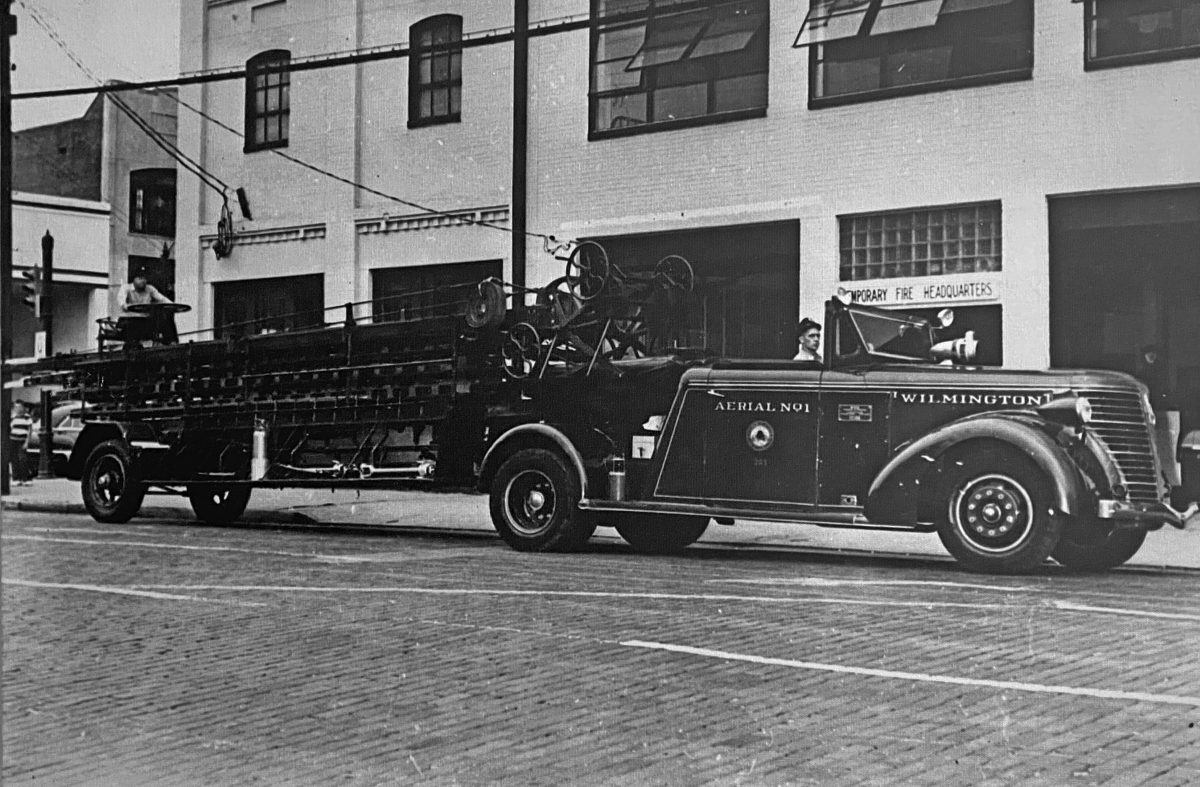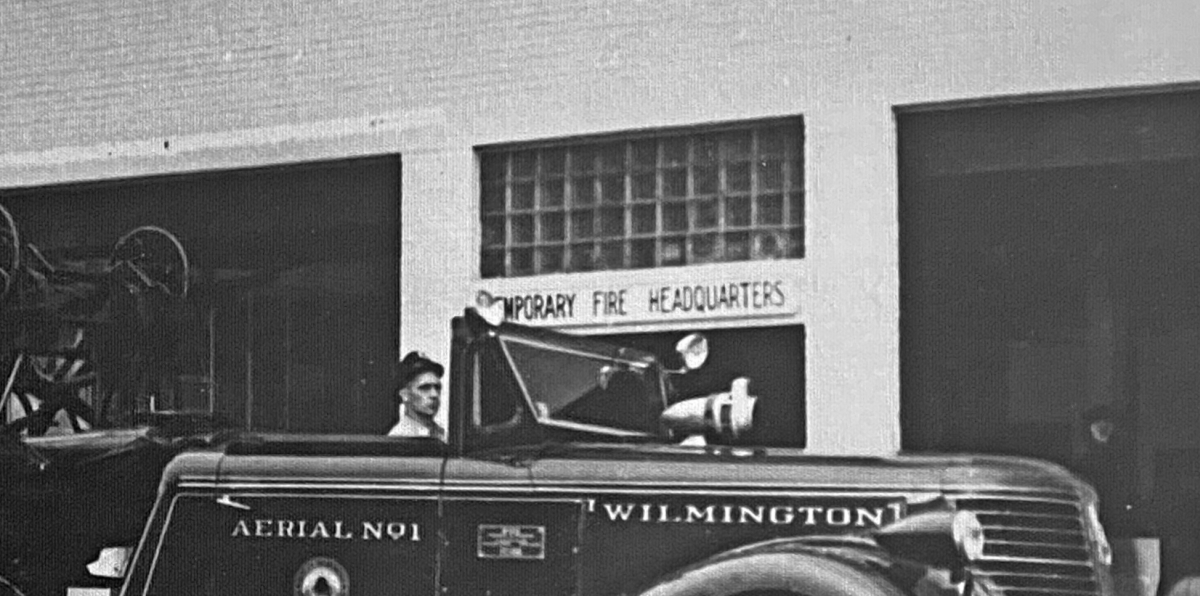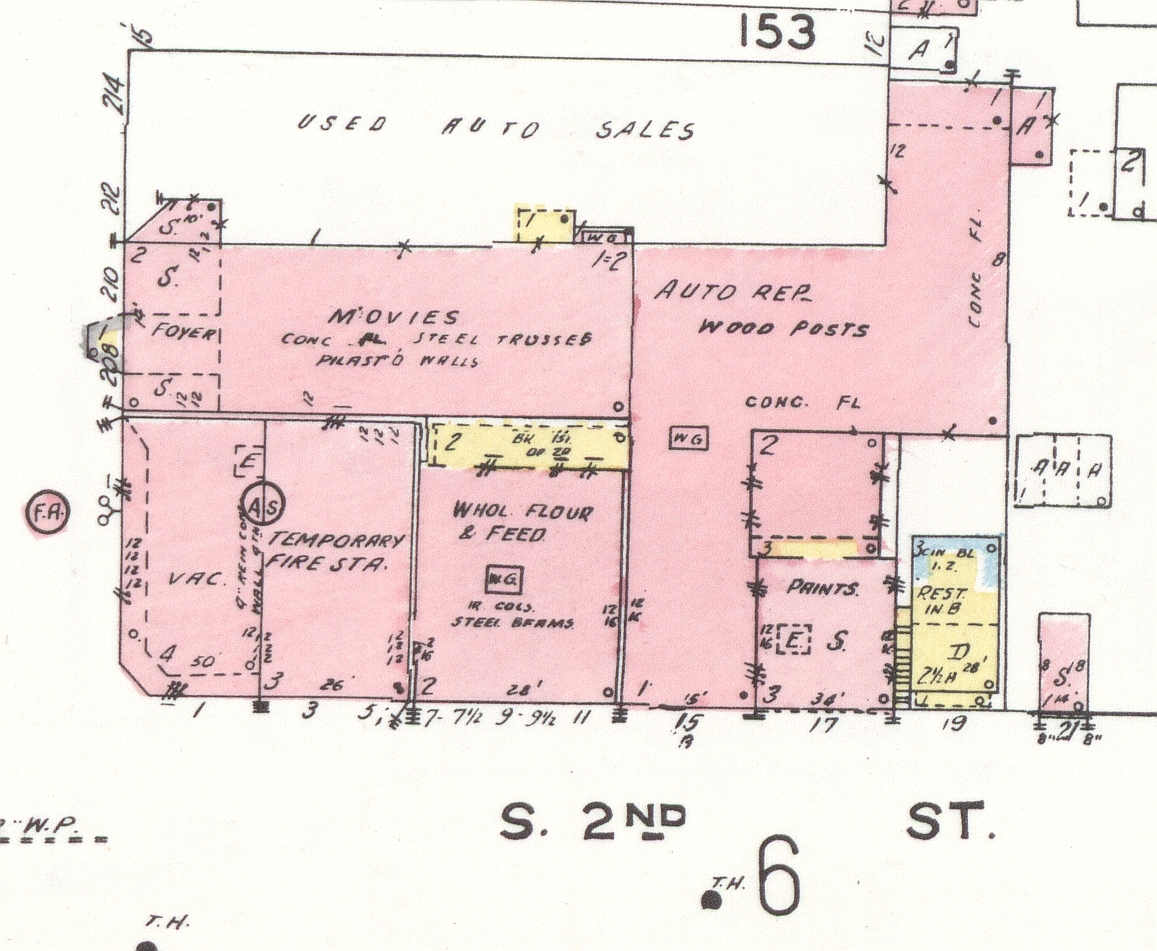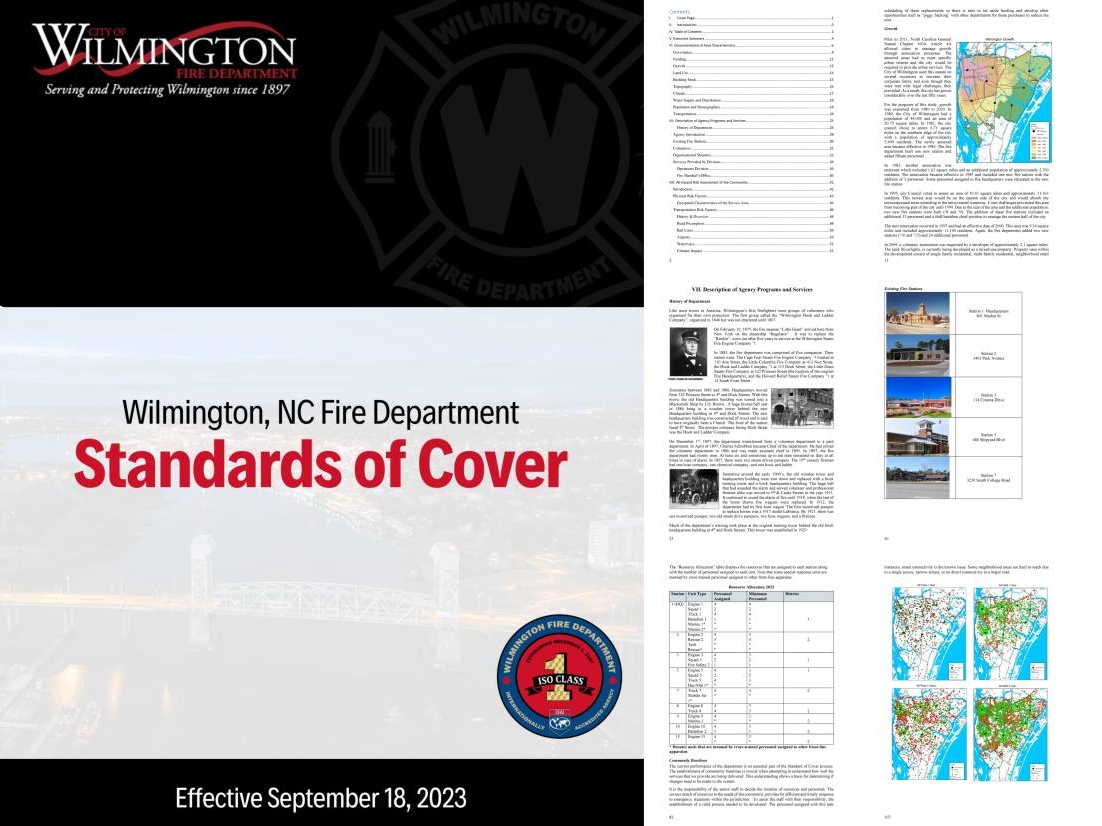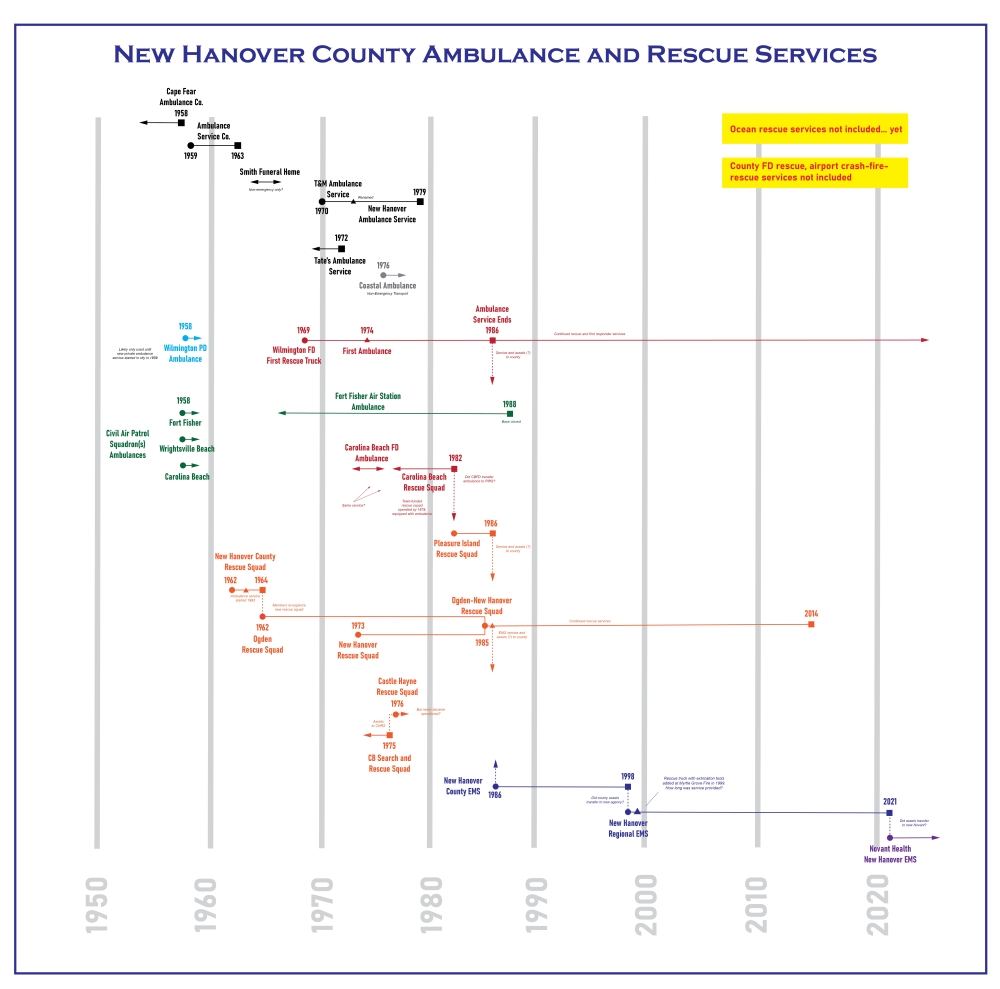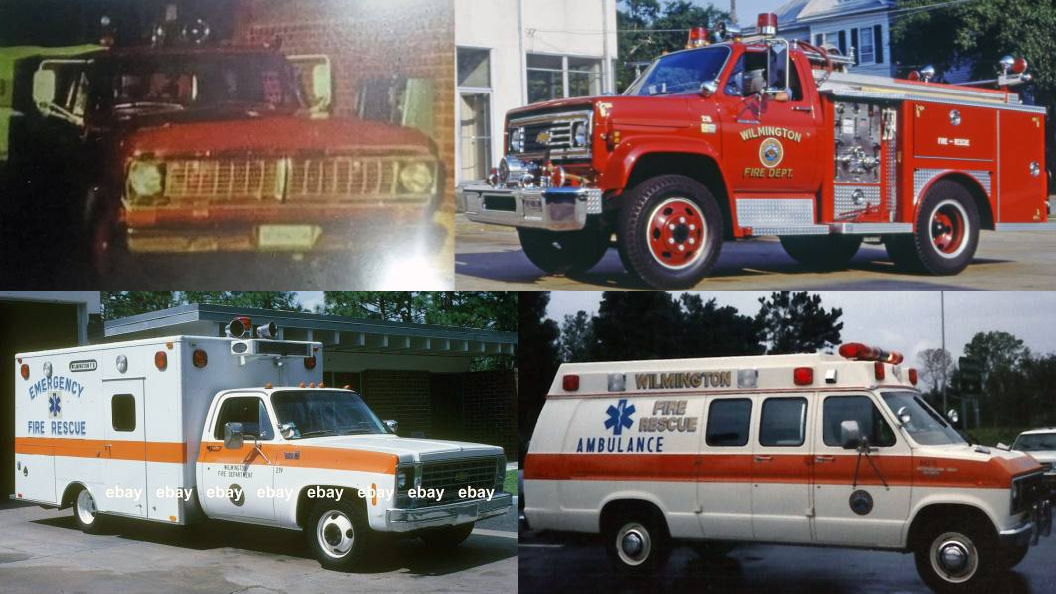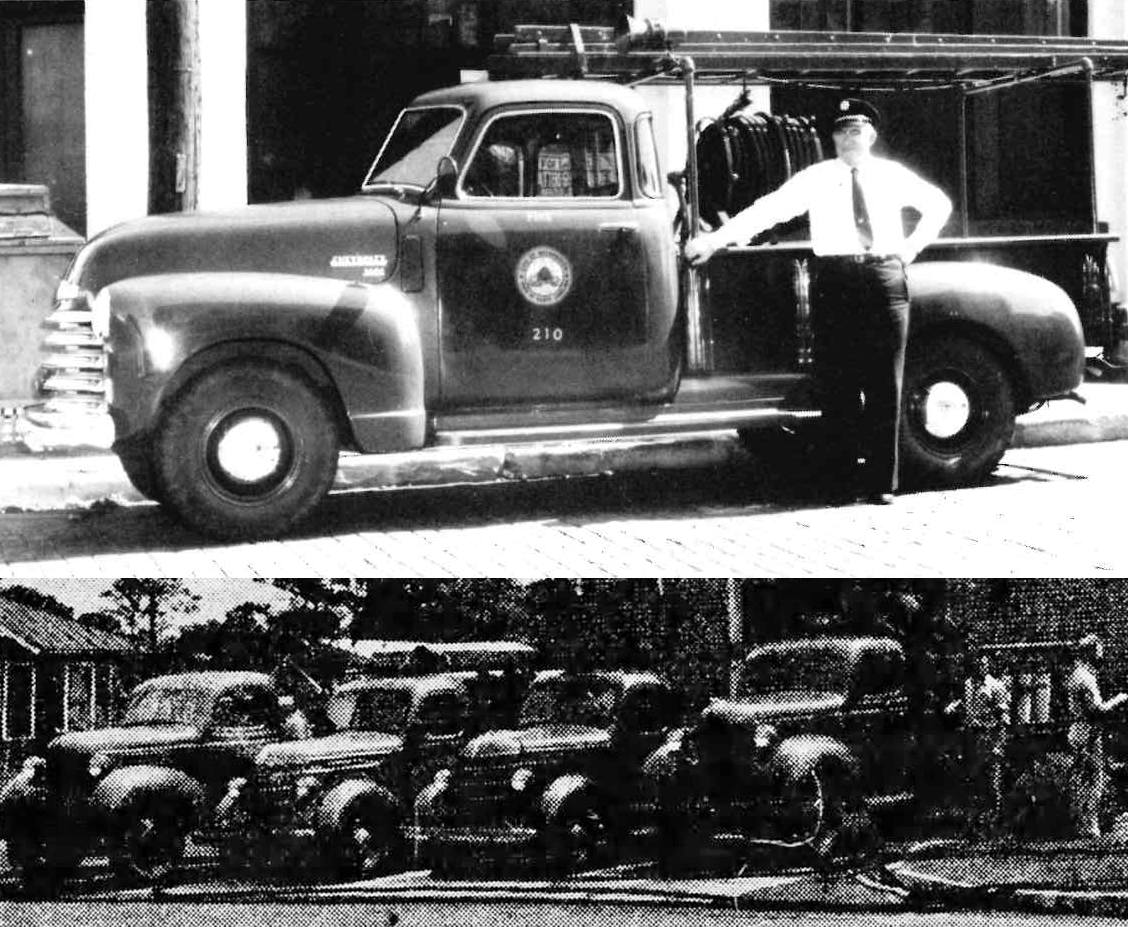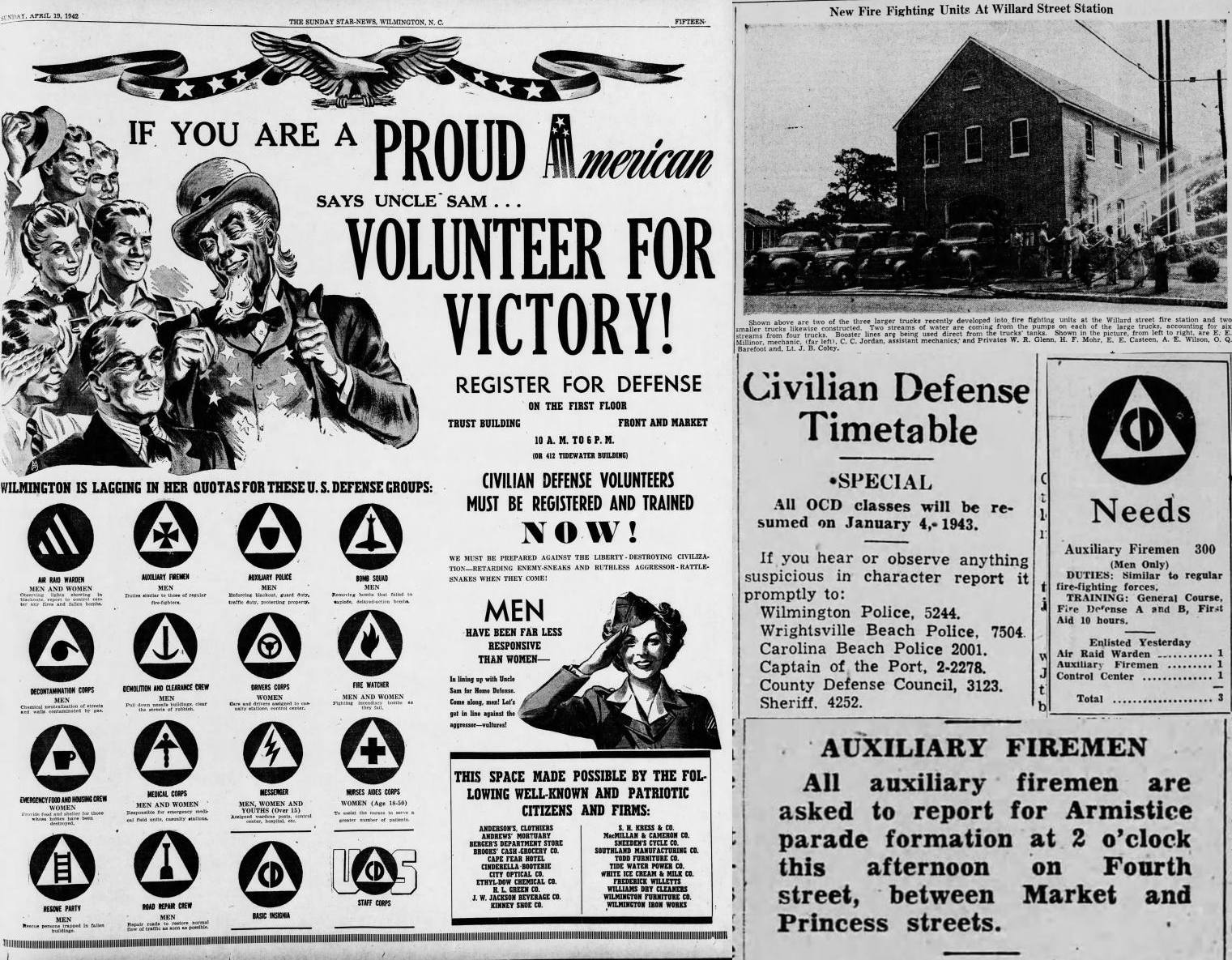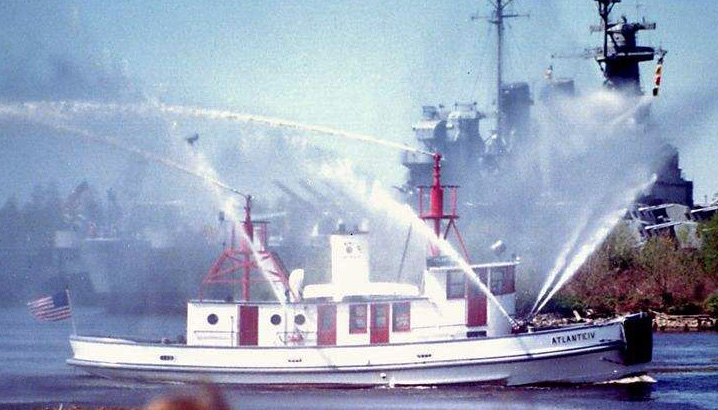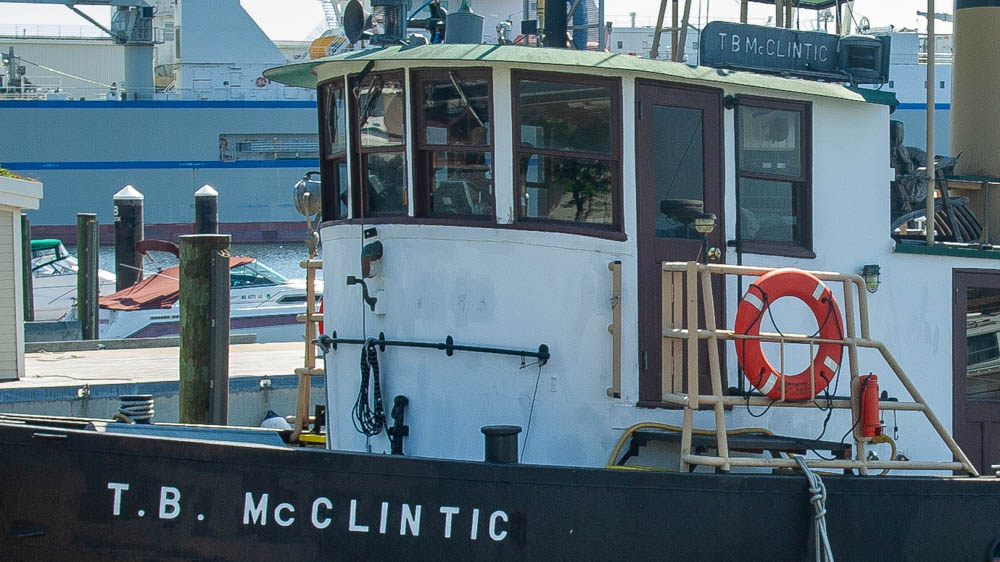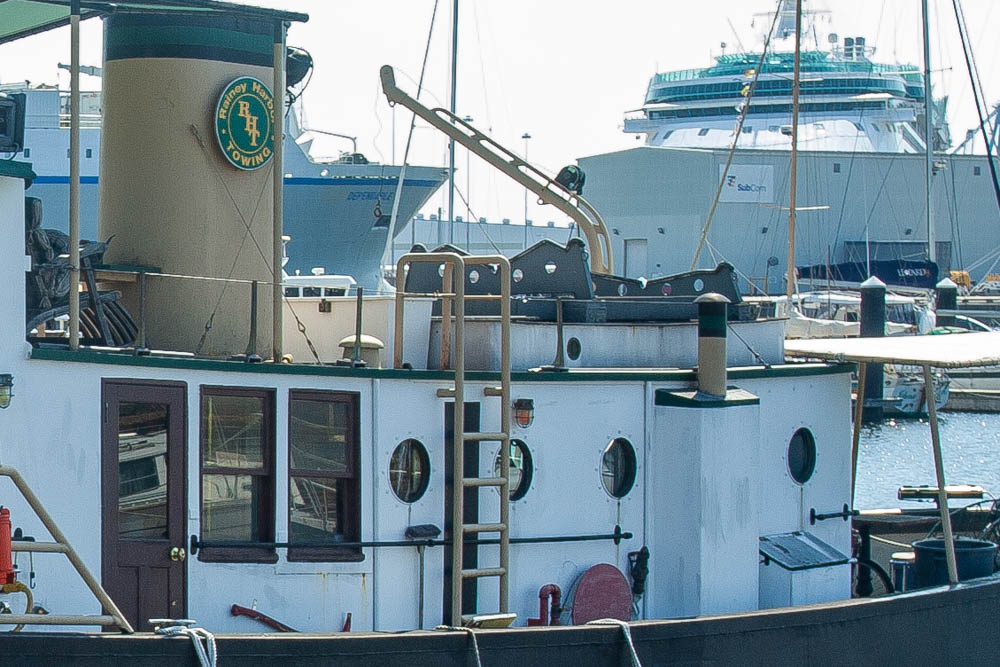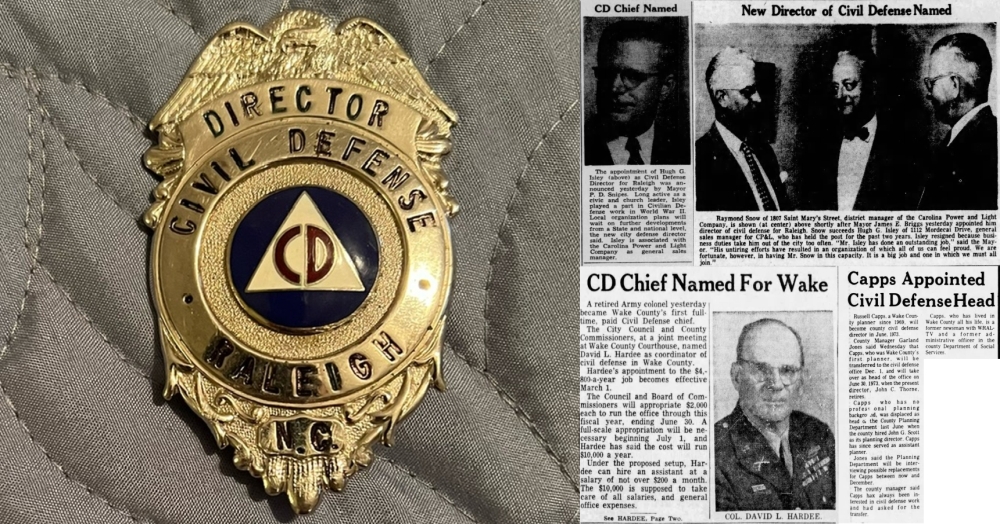This is a blog version of a Facebook posting.

Presenting fire apparatus past and present that have served at Wilmington International Airport.
1954 ALF Type O-11A – 500/1000/100/80
Likely serial #54L210, which was former NCANG
Included 80 gallons Chlorobromomethane
Possibly sold at auction, along with second 1954 ALF crash truck, at surplus airport property sale in June 1991. (Star News, Jun 3, 1991)
1964 Ford F-100 – 300#
Yellow Bird – June 1979 – Wayne Greer photo
1969 Oshkosh MB-5 – 400/400/30
CFR 19 – March 1990 – Ex-USN – Wayne Greer photo
1974 International/FireBoss – 400#/100
Chief 1 – June 1979 – Wayne Greer photo
1976 Oshkosh M-1500 – 1250/1500/180
CFR 2 – June 1978 – Wayne Greer photo
Also cited as a 1975 model (Star News, Feb 11, 1989)
1989 Ford F-250/___ #1 of 2 – 100/500#
CFR 14 – March 1990 – Wayne Greer photo
1989 Ford F-250/___ #2 of 2 – 250/500#
CFR 15 – March 1990 – Wayne Greer photo
1990 Oshkosh T-1500 – 1200/1500/200
CFR 18 – Wayne Greer photo
Cost $305,000 (Star News, Sep 29, 1989)
2001 Oshkosh T-1500 – 1500/1500/200/460#
CFR 16 – Patrick Shoop photo
2011 Rosenbauer Panther – 1850/1500/200/500#
CFR 18 – Patrick Shoop photo
2024 Oshkosh Striker – Specs go here
Rescue 1 – June 2024 – New Hanover County Fire Rescue photo
Not Pictured
The Wilmington Morning Star on October 8, 1946, reported that the airport–then named Bluethenthal Field–had two small pumpers, each with 300 gallon capacity, and eight men on duty.
The Star-News on January 15, 1950, reported that the airport had a pumper, a brush truck, and a “chemical crash truck,” all obtained through the War Assets Administration.
Airport History
- 1927 – First landing at airport, named Bluethenthal Field
- 1941 – Army Air Corps took over airport.
- 1944 – Declared federal surplus, deeded to county.
- 1950 – Modern terminal building and control tower erected.
- 195_ – Renamed New Hanover County Airport.
- 1970s – The Air Force 48th Fighter Interceptor Squadron operated at the airport.
- 1988 – Renamed New Hanover County International Airport.
- 1989 – Airport commission took over ownership and management.
- 1997 – Renamed Wilmington International Airport.
Notes
Greer photos from the collections of Jon Umbdenstock and the late Jay Thomson.
The 1969 Oshkosh was acquired in a later decade.
The current incarnation of the airport fire department, operated by the county, was created in either 1972 or 1975, after the Air Force ceased providing crash fire rescue services, after they ceased regular operations at the airport. (Star News, August 9, 1981; Star News, Jan 9, 1982)
In October 1974, news articles reported that grant money for purchase of an estimated $120,000 fire truck had been received. Currently, the airport had an agreement with the 48th Fighter Interceptor Squadron to use their crash truck to fulfilling FAA ARFF regulations, until the county fire truck was available for use. Bids had been advertised in April 1974 for a “twin dual-agent skid-mounted fire extinguishing” system. [ Was this a separate unit from the crash truck that the grant money was received for? ] (Star News, Apr 7 1974; Oct 11, 1974)
The airport opened a new fire station in March 1981, located north of the passenger terminal. The prior fire station was a former Air Force maintenance hangar. The 8,200 square-foot building had slow-opening hangar doors, so the doors had to remain open at all times for quick response of fire apparatus. In cold weather, the trucks were hard to start and the building was uncomfortable for firefighters. (Star News, Sep 19, 1980; Star News, August 9, 1981)
